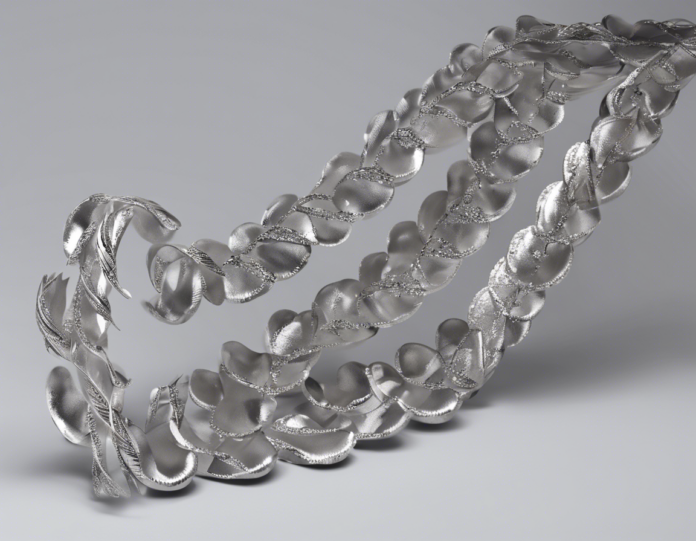Silver, often referred to as the “poor man’s gold,” has been a valuable metal for centuries due to its various uses, including in jewelry, electronics, and investments. Investors often turn to silver as a safe haven during economic uncertainties and as a hedge against inflation. The price of silver, like all commodities, is driven by supply and demand dynamics, geopolitical factors, economic indicators, and market speculation. In recent years, silver rate trends have been influenced by a multitude of factors, making it an interesting and often volatile market to follow.
Factors Influencing Silver Prices
Global Economic Conditions
Silver prices are heavily influenced by global economic conditions. During times of economic instability or uncertainty, investors tend to flock to safe-haven assets like silver, driving up the price. Factors such as GDP growth, unemployment rates, and inflation can all impact the price of silver.
Industrial Demand
Silver is widely used in various industries, including electronics, solar panels, and medical equipment. Changes in industrial demand can have a significant impact on silver prices. For example, an increase in the adoption of solar energy can lead to higher demand for silver, thereby driving up prices.
Investment Demand
Investment demand for silver plays a crucial role in determining its price. Factors such as interest rates, inflation expectations, and geopolitical tensions can influence investors’ appetite for silver as a store of value. Exchange-traded funds (ETFs) and silver futures contracts also impact the price of silver.
Currency Fluctuations
The value of the U.S. dollar and other major currencies can impact the price of silver. A strong U.S. dollar usually leads to lower silver prices, as it makes the commodity more expensive for investors holding other currencies. Conversely, a weaker dollar tends to drive up the price of silver.
Current Trends in Silver Prices
In recent years, silver prices have experienced significant fluctuations. The COVID-19 pandemic, geopolitical tensions, and economic uncertainties have all contributed to volatility in the silver market. In 2020, the price of silver surged to a seven-year high as investors sought safe-haven assets amidst the pandemic-induced market turmoil. However, silver prices plunged in early 2021 as the economic outlook improved and investors turned to riskier assets.
As of [Current Date], the price of silver stands at [Current Price], reflecting [Current Trend: Increase/Decrease/Stagnation]. Analysts are closely monitoring various factors, including [Factor 1], [Factor 2], and [Factor 3], to gauge the future direction of silver prices.
Strategies for Investing in Silver
Physical Silver
Investors can purchase physical silver in the form of coins, bars, or bullion. Owning physical silver provides a tangible asset that can be stored securely. However, storage costs and potential liquidity issues may deter some investors.
ETFs and Mutual Funds
Exchange-traded funds (ETFs) and mutual funds offer a convenient way to invest in silver without directly holding the physical metal. These vehicles provide exposure to silver prices and are easily tradable on major exchanges.
Silver Mining Stocks
Investing in silver mining companies allows investors to gain exposure to the silver market while also benefiting from the potential growth of mining operations. However, mining stocks can be volatile and are subject to company-specific risks.
FAQs:
1. What is the current price of silver?
The current price of silver fluctuates daily based on market conditions. It can be tracked through financial news websites or platforms that display commodity prices.
2. Is silver a good investment?
Silver can be a good investment for diversifying a portfolio and hedging against economic uncertainties. However, it is important to conduct thorough research and consider factors such as risk tolerance and investment goals.
3. How can I invest in silver?
Investors can invest in silver through various avenues, including physical silver, ETFs, mutual funds, silver mining stocks, and futures contracts. Each option has its own set of risks and benefits.
4. What drives the price of silver?
The price of silver is driven by factors such as global economic conditions, industrial demand, investment demand, and currency fluctuations. Geopolitical events and market speculation also impact silver prices.
5. Is silver more volatile than gold?
Silver is generally considered more volatile than gold due to its lower price and market liquidity. Silver prices can experience larger percentage swings compared to gold prices.
In conclusion, silver rate trends are influenced by a myriad of factors that make the market dynamic and challenging to predict. Investors looking to capitalize on silver’s potential as a safe-haven asset should closely monitor global economic indicators, industrial demand, and investment sentiment. By understanding the intricacies of the silver market and adopting a diversified investment strategy, investors can navigate the volatility and potentially benefit from the long-term value of silver.









